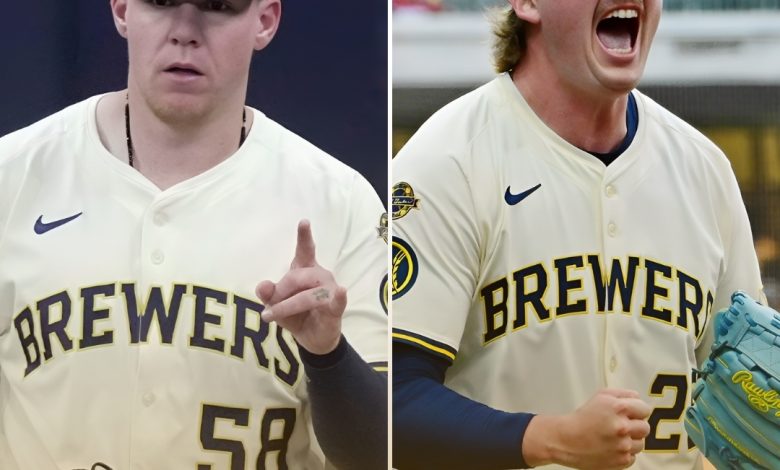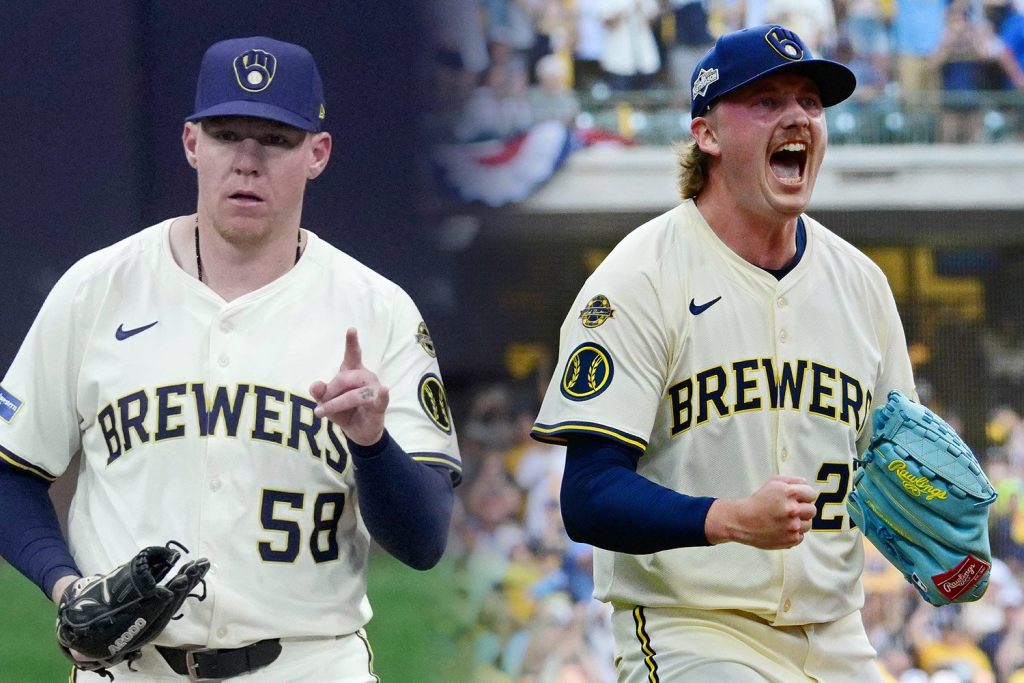Milwaukee’s Push for a More Versatile Bullpen Raises Big Questions About Its Non-Optionable Arms .MH

Nick Mears and Rob Zastryzny are effective situational relievers, but the Brewers may be able to make better use of their roster spots next season.

With nearly the entire roster that won a franchise-record 97 games in the regular season still under club control for 2026, the Brewers need not pursue much turnover this winter. If there’s any area that could use reshuffling, it’s a portion of the bullpen.
In an era where many bullpens are tasked with covering more than 40% of a team’s regular-season innings with a 13-pitcher limit, front offices need the flexibility to shuttle a handful of relievers between Triple-A and the big leagues throughout the season to pace workloads. The current makeup of the Brewers’ projected 2026 relief corps leaves little room to do so.
Six of Milwaukee’s best eight relievers will carry at least one minor-league option into next season, but four of them – Abner Uribe, Trevor Megill, Jared Koenig, and Aaron Ashby – are valuable high-leverage arms who must remain on the roster if healthy. In practicality, that leaves Grant Anderson and DL Hall as the Brewers’ lone optionable arms, and even those two boast unique strengths that could keep them on the roster nearly full-time. The rubber-armed Anderson appeared no worse for wear after logging 69 2/3 innings, while Hall was a useful long reliever who occasionally opened for right-handed starters with pronounced platoon splits.
Perhaps the Brewers feel those two spots offer enough flexibility as they are, but they could benefit from adding another optionable slot to their bullpen. At minimum, the casualty would have to be one of Nick Mears or Rob Zastryzny, the two relievers on the 40-man roster who cannot be optioned.
Mears’s importance to next year’s team is debatable after an up-and-down 2025. After an illness in spring training delayed his debut, a diminished fastball upon his return proved much easier to barrel and led to fewer strikeouts. However, mechanical changes unlocked nearly pinpoint control, allowing him to post a 0.51 ERA and 1.89 FIP over his first 19 appearances and emerge as Pat Murphy’s preferred fireman.
The relative lack of strikeouts and the heaviest workload of his big-league career seemingly caught up to Mears in the second half. His walk rate nearly tripled from 3.6% before the All-Star break to 9.9% after, and he limped to a 5.59 ERA and 6.34 FIP. Interestingly, though, his fastball qualities improved. While it was still hit hard when put in play, Mears rediscovered that extra tick of velocity, raising its stuff grades to just above average and reintroducing more whiffs.
| Split | FB Velo | FB Stuff+ | FB StuffPro | FB Whiff% | FB xwOBA |
| 1st Half | 95.1 | 95 | 0.1 | 12.1% | .376 |
| 2nd Half | 96.1 | 102 | -0.2 | 21.5% | .369 |

Through one lens, Mears flamed out after an unsustainable workload and could be in for regression in 2026. Through another, he’s due for a better year because his stuff is trending in the right direction. While the Brewers tendered him a contract for next season, his unclear outlook and lack of roster flexibility could make trading him for a lottery ticket a tempting option.

Zastrynzy, meanwhile, has dealt with injuries in both of his seasons in Milwaukee but has pitched to a 2.12 ERA, 4.09 FIP, and 4.27 SIERA over 29 2/3 innings when healthy. His strikeout and walk rates have been below average, but he has generated whiffs and weak contact at outstanding rates. The greatest knock against Zastrynzy may be that he’s redundant at times in a bullpen that already features Koenig, Ashby, and Hall as left-handed options.
Mears and Zastrynzy profile as useful middle relievers in the right bullpens, but Milwaukee may not be the best fit for both at once. The Brewers could use another flex spot for shuttle arms like Craig Yoho, Easton McGee, and Sammy Peralta, to say nothing of the stable of minor-league starters they could deploy out of the bullpen throughout the season. The offseason is still in its infancy, but at this moment, moving one of their non-optionable veterans is the easiest way to create more breathing room on the depth chart.



